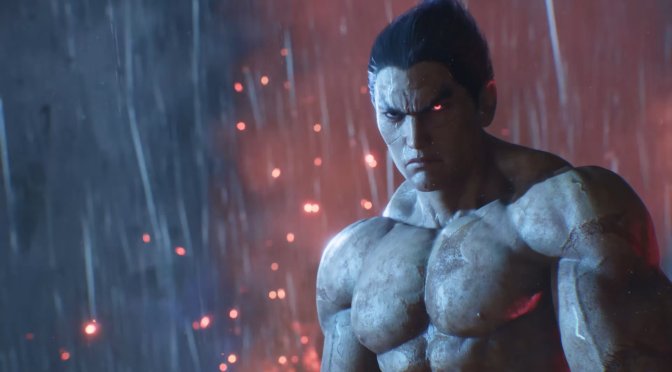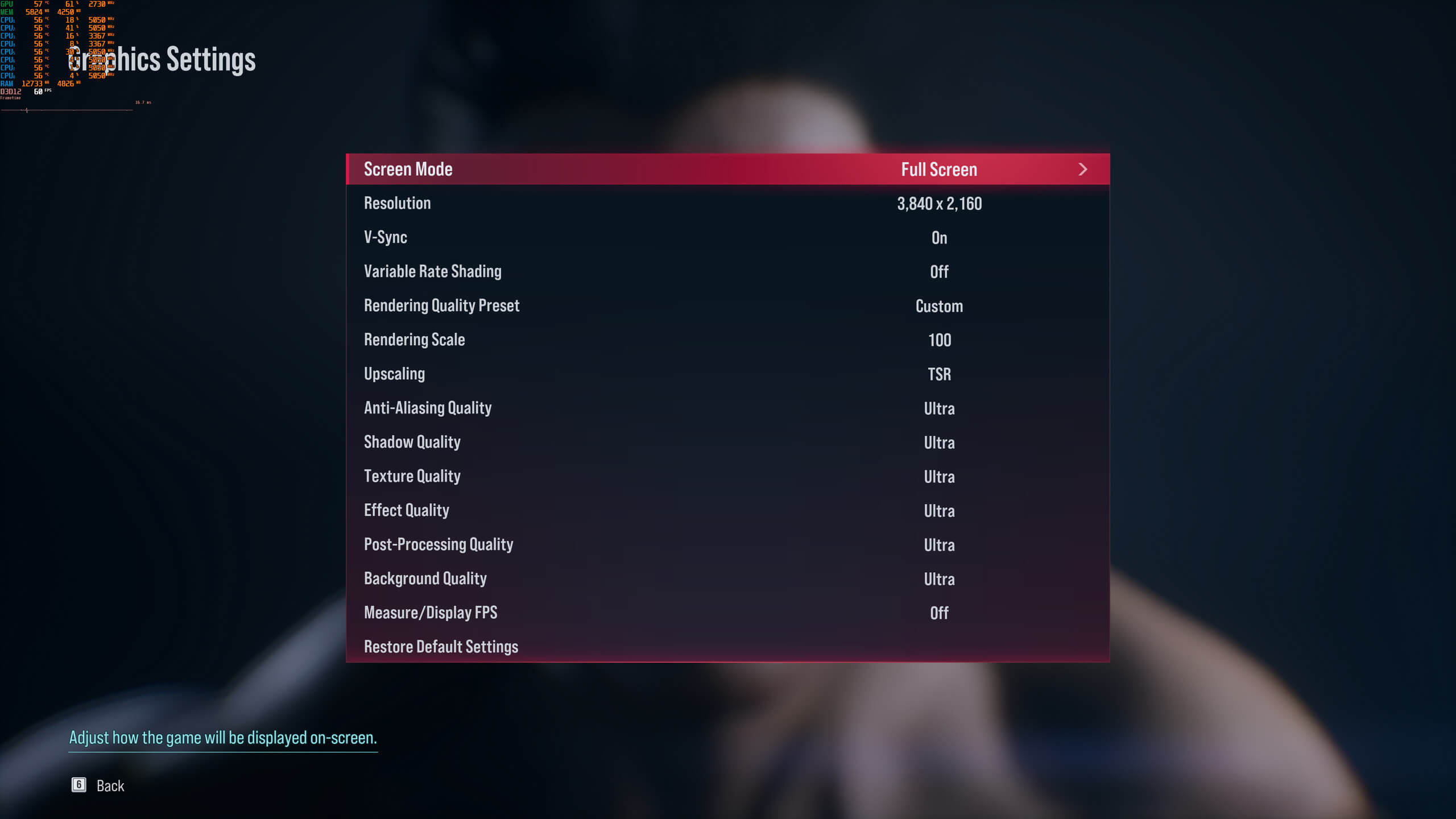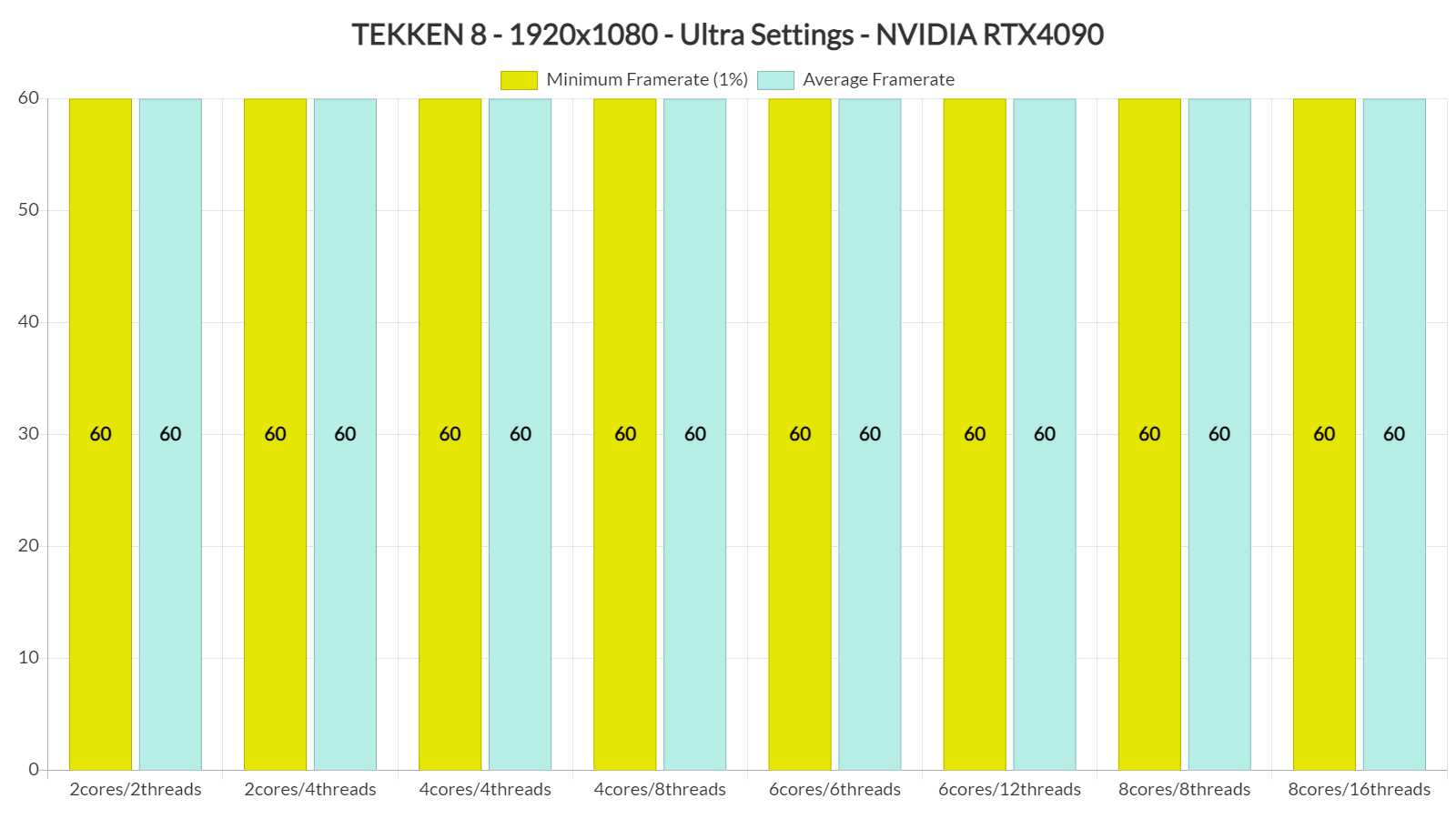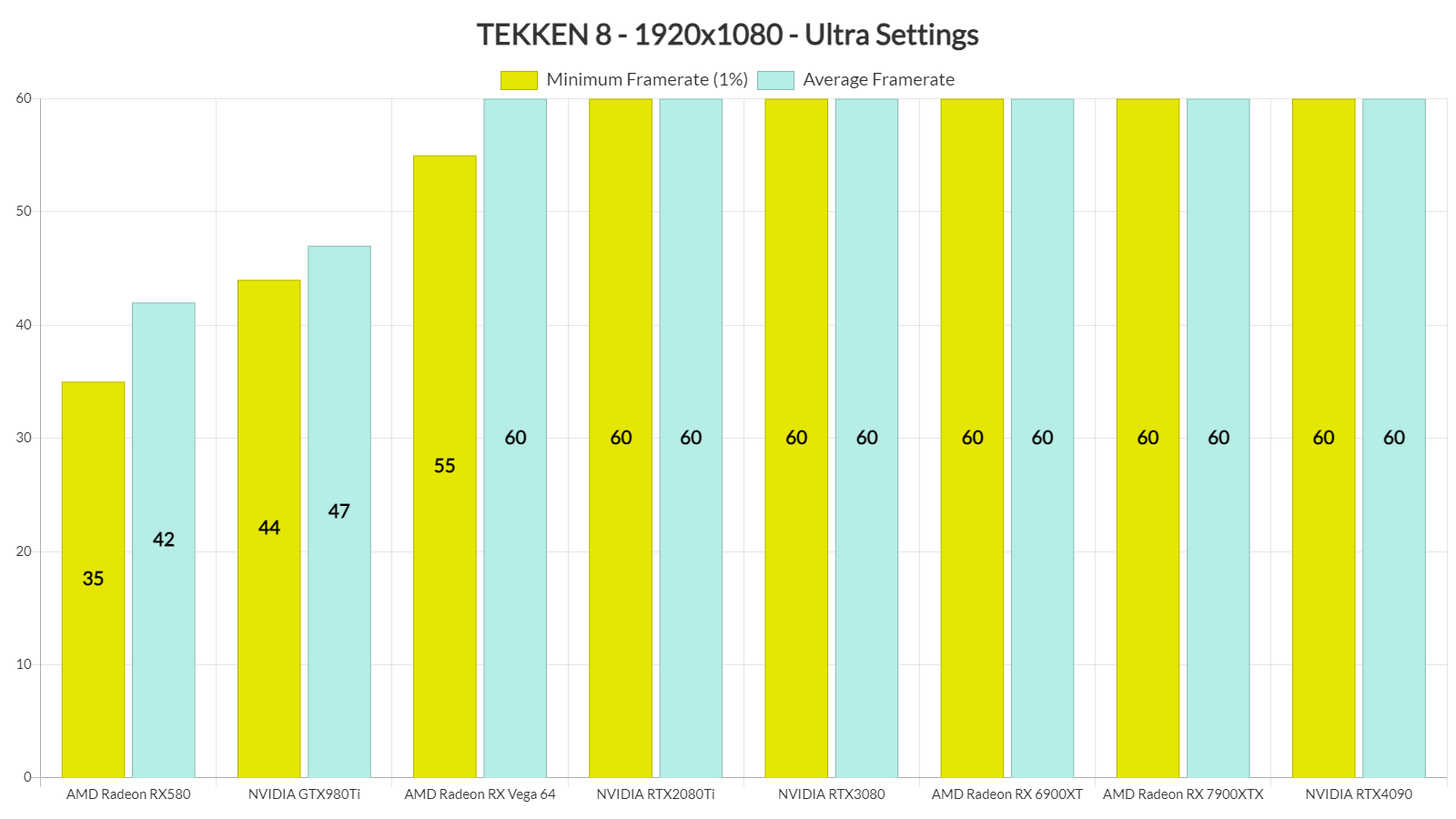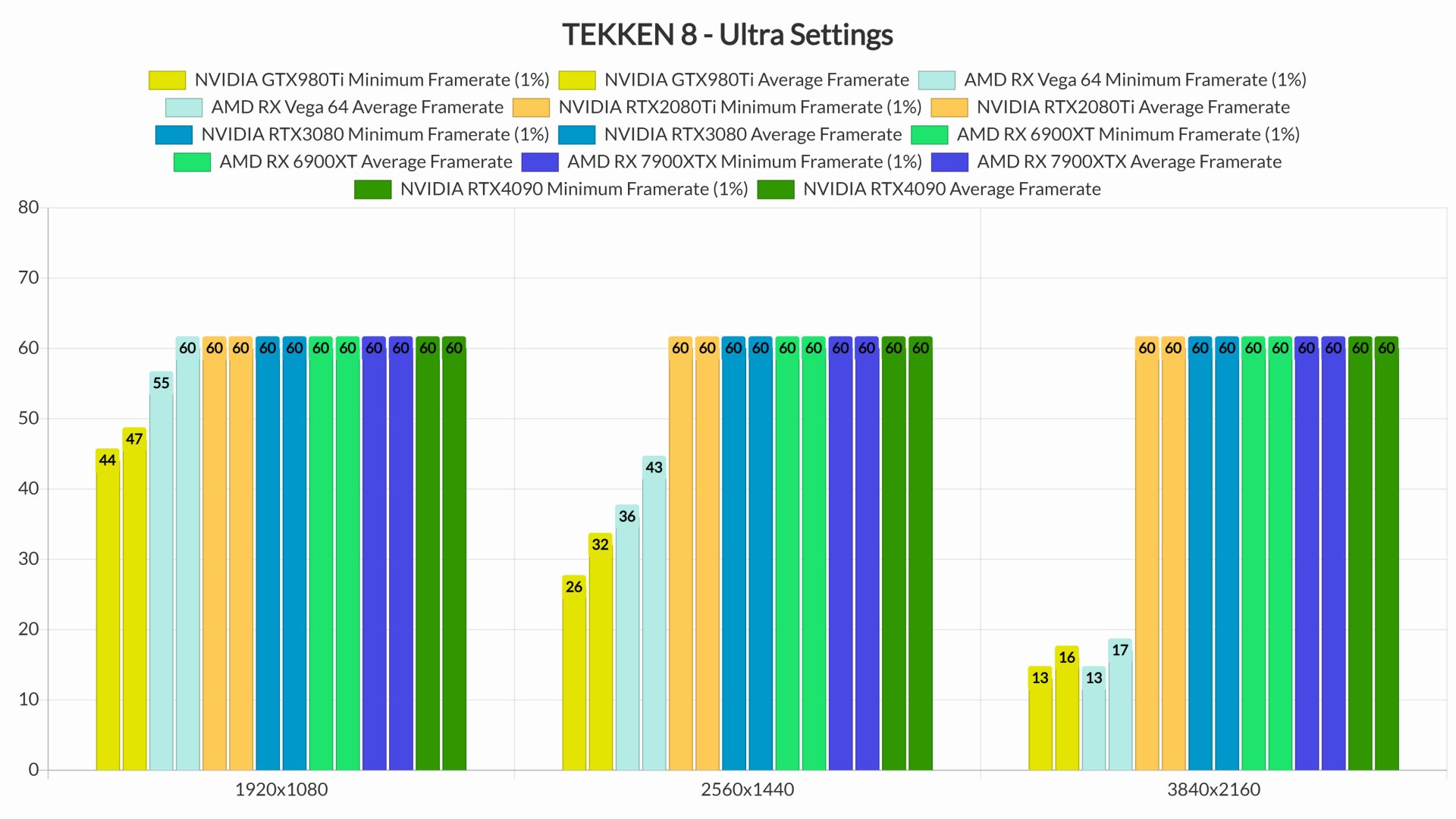Bandai Namco released last week its latest fighting game, TEKKEN 8. Powered by Unreal Engine 5, it’s time now to benchmark TEKKEN 8 and examine its performance on the PC platform.
For our benchmarks, we used an AMD Ryzen 9 7950X3D, 32GB of DDR5 at 6000Mhz, AMD’s Radeon RX580, RX Vega 64, RX 6900XT, RX 7900XTX, NVIDIA’s GTX980Ti, RTX 2080Ti, RTX 3080 and RTX 4090. We also used Windows 10 64-bit, the GeForce 551.23, and the Radeon Adrenalin Edition 24.1.1 drivers. Moreover, we’ve disabled the second CCD on our 7950X3D.
Bandai Namco has added a few graphics settings to tweak. PC gamers can adjust the quality of Textures, Effects, Shadows, Backgrounds and more. The game also supports a lot of upscaling techniques. Unfortunately, though, there is no support for DLAA or FSR 3 Native Quality. As such, we suggest using TSR at 100%. This setting provides the best image quality in this game.
TEKKEN 8 does not feature any built-in benchmark tool. So, for our benchmarks, we tested the Elegant Palace and Fallen Destiny stages. The first one had a lot of destructible objects, whereas the second stage appeared to be more GPU-heavy.
To see how the game runs with different types of CPUs, we simulated dual-core, quad-core, and hexa-core CPUs. And, we are happy to report, that TEKKEN 8 can run with 60fps at 1080p/Ultra Settings, even on a dual-core CPU. Even without SMT (Hyper-Threading), our simulated dual-core system was able to provide constant 60fps during gameplay. To be honest, I’m a bit shocked by this. I was expecting T8 to require at least a quad-core CPU, especially after what we’ve seen in Mortal Kombat 1.
TEKKEN 8 does not also require a high-end GPU. At 1080p/Ultra, our AMD Radeon RX Vega 64 was able to provide an average of 60fps. During some Heat moves, we saw some drops to 55fps. However, the game was perfectly playable on that dated AMD GPU.
At 1440p/Ultra, our top five GPUs had no trouble at all running the game. As for Native 4K/Ultra, our AMD Radeon RX 7900XTX and NVIDIA GeForce RTX4090 were able to provide a constant 60fps experience.
Graphics-wise, TEKKEN 8 looks great but it cannot match its debut in-engine trailer. We’ve already talked about this so I won’t be repeating myself. The game does not support UE5’s Lumen but you can use TekkenOverlay in order to enable it. As we’ve showcased, though, some stages may look worse. So, until its creator manages to provide some additional tweaks and fixes, we suggest staying away from it.
It’s also worth noting that Bandai Namco has addressed the online/network issues that plagued the game on its first day. I’ve played A LOT of Online Ranked Matches without experiencing any crashes. The game does not also have any stutters during gameplay. Not only that but when you first launch it, it will compile its shaders. As such, everything feels silky smooth.
In conclusion, TEKKEN 8 is perhaps the most optimized fighting game on PC. It does not require a high-end PC system and it does look great. However, it’s a bummer that Bandai Namco has not gone the extra mile to match the visuals of that first trailer. Apart from that, there is nothing to complain about here. TEKKEN 8 is a rock-solid release on PC!

John is the founder and Editor in Chief at DSOGaming. He is a PC gaming fan and highly supports the modding and indie communities. Before creating DSOGaming, John worked on numerous gaming websites. While he is a die-hard PC gamer, his gaming roots can be found on consoles. John loved – and still does – the 16-bit consoles, and considers SNES to be one of the best consoles. Still, the PC platform won him over consoles. That was mainly due to 3DFX and its iconic dedicated 3D accelerator graphics card, Voodoo 2. John has also written a higher degree thesis on the “The Evolution of PC graphics cards.”
Contact: Email

